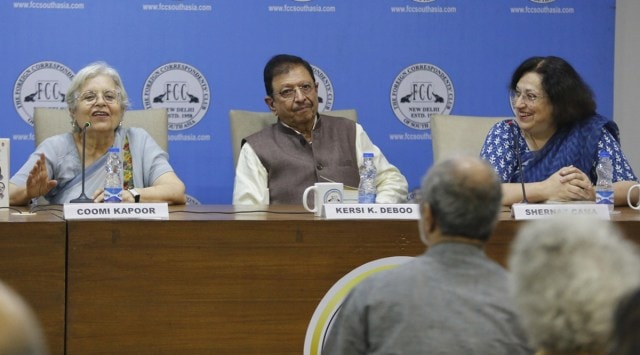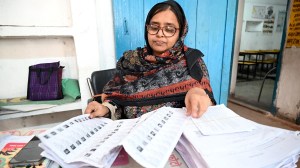Peek into Parsi history in veteran journalist Coomi Kapoor’s book
The book discusses Parsi figures from across the arts, sciences, business and politics, including Dadabhai Naoroji, Homi Bhabha, Freddie Mercury, Jamsetji Tata and Sam Manekshaw.
 Coomi Kapoor,Kersi K.Deboo and Shernaz Cama during Coomi Kapoor's book discussion in new delhi on monday. (Express photo by Anil Sharma).
Coomi Kapoor,Kersi K.Deboo and Shernaz Cama during Coomi Kapoor's book discussion in new delhi on monday. (Express photo by Anil Sharma). It was a lack of personable literature, loaded with stories, characters, conflicts, twists and turns, about the Parsi community in India, that compelled veteran journalist Coomi Kapoor to pen a history of her community in The Tatas, Freddie Mercury & Other Bawas: An Intimate History of the Parsis in 2021, which was recently revised in paperback.
On Monday, Kapoor gathered with Delhi University professor Shernaz Cama and National Commission for Minorities vice-chairman Kersi K Deboo, both Parsis, at the Foreign Correspondents’ Club of South Asia to discuss the origins of the book, its urgent tone, and the community’s future challenges.
“I hadn’t given a lot of thought to my heritage before I started work on this book, and it turned out to be a journey of discovery,” said Kapoor.
“I didn’t want to write a who’s who or encyclopaedia – I wanted the story to be readable, to not be hagiographic and to be relatable to non-Parsis. So, I started with the conflict between Cyrus Mistry and Ratan Tata in 2016, because there was so much not yet known about India’s largest business house.”
The book discusses Parsi figures from across the arts, sciences, business and politics, including Dadabhai Naoroji, Homi Bhabha, Freddie Mercury, Jamsetji Tata and Sam Manekshaw.
With the story pegged at the Mistry-Tata conflict, Kapoor narrates the Parsi community’s presence in India and outsized impact on the country’s social, political and economic life.
She also expands the purview to describe the circumstances under which the community fled persecution in Iran sometime between the 8th and 10th centuries, leading to their arrival in India.
Deboo detailed how he was approached by Kapoor to contribute his personal history to the book, which also contains first-hand interviews with prominent Parsi figures and community members. “Some of these stories will be well-known to you all, some little known, and some completely unknown,” he said.
Cama turned the conversation to the dwindling Parsi community in India, taken to be 50,000 people according to the last census, which many scholars believe to be an overestimate after recent migrations to the US, Canada and the Middle East.
“This book is an important reminder that we still exist, because a 1,000 years ago historians thought we had died out due to our oppression in Iran and our under-the-radar presence in India,” she said.
Kapoor ended with how the outsized impact of Parsis on the countries they inhabit should be a “glowing advertisement” for accepting refugees and migrants. “There’s something about the way they feel the need to establish themselves,” she said.







